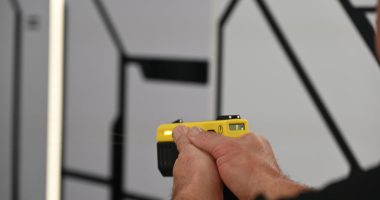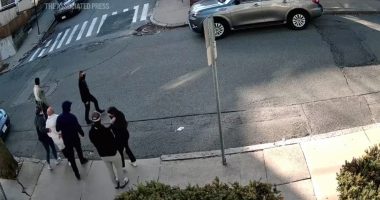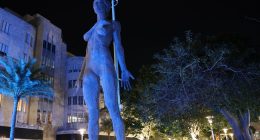
Left: Justice Elena Kagan (AP Photo/Jess Rapfogel); Right: Justice Clarence Thomas (YouTube/Library of Congress)
The U.S. Supreme Court on Thursday strengthened and clarified the protections of the Fourth Amendment in a case about a jeweler who says he was maliciously prosecuted by police in small-town Ohio.
The 6-3 majority opinion by Barack Obama-appointed Justice Elena Kagan uses somewhat folksy syntax to tidily describe the somewhat odd facts of the case and the court’s terse reasoning. A dissent penned by George H.W. Bush-appointed Justice Clarence Thomas lodges a fundamental complaint about the legal theory used as the basis of the underlying lawsuit. Meanwhile, Donald Trump-appointed Justice Neil Gorsuch dissented on separate but related grounds.
In the case stylized as Chiaverini v. City of Napoleon, the nine justices were asked to settle a circuit split over how courts should deal with lawsuits alleging violations of a constitutional right when the accused government agents also did some part of their job in line with the law.
Jascha Chiaverini came under suspicion of buying a small-ticket stolen ring worth around $45 from a thief. After some interactions with the ring’s rightful owners and law enforcement, the jeweler was charged with two misdemeanors and one felony. While he was arrested and detained for three days, he was never indicted and the charges were dropped because local prosecutors “decided that they had higher priorities” and “failed to present the case to a grand jury in the required time,” Kagan wrote.
Later, Chiaverini and his jewelry business sued the police officers who arrested him under 42 U.S.C. §1983, alleging a Fourth Amendment malicious prosecution — based on the notion that the officers lacked probable cause for the felony offense for two reasons.
Kagan explains the jeweler’s position:
First, they had no reason to think he knew the ring was stolen; indeed, he said, their claim that he had admitted as much was an out-and-out lie. And second, they could not show — as, in his view, Ohio law required — that the ring was worth more than $1,000; its value was far less, more in line with its $45 purchase price. So Chiaverini concluded that his suit satisfied the “without probable cause” element of a Fourth Amendment malicious prosecution claim
The police, however, argued the malicious prosecution claims failed because the misdemeanors were supported by probable cause.
“The question here is whether a Fourth Amendment malicious-prosecution claim may succeed when a baseless charge is accompanied by a valid charge,” the majority opinion explains.
Two lower courts — including the Sixth Circuit Court of Appeals — agreed with the arresting officers. That created the circuit split because other circuits have ruled against a flat bar — instead instructing courts to look at such lawsuits using a line-item lens.
And, in the end, all the parties actually agreed.
Again, Kagan at length:
[A] funny thing happened on the way to this Court. The officers now agree with Chiaverini that there is no such flat bar. And the United States as amicus curiae also argues that the Sixth Circuit rule is wrong. We agree with them all. Consistent with both the Fourth Amendment and traditional common-law practice, courts should evaluate suits like Chiaverini’s charge by charge.
Consider first how that result follows from established Fourth Amendment law. Under that Amendment, a pretrial detention (like the one Chiaverini suffered) must be based on probable cause. Otherwise, such a detention counts as an unreasonable seizure. And even when a detention is justified at the outset, it may become unreasonably prolonged if the reason for it lapses. So if an invalid charge — say, one fabricated by police officers — causes a detention either to start or to continue, then the Fourth Amendment is violated. And that is so even when a valid charge has also been brought…
Then, at some point in the proceedings, the officers and the United States started bringing up an ancillary argument about why they thought the jeweler’s lawsuit should fail. The majority opinion tidily dismisses that line of argument by saying the question of causation was not presented in the case and not fully briefed before the court — instructing the lower courts to deal with the issue first.
“The question presented here arises when the official brings multiple charges, only one of which lacks probable cause,” Kagan explains in summary. “Do the valid charges insulate the official from a Fourth Amendment malicious-prosecution claim relating to the invalid charge? The answer is no: The valid charges do not create a categorical bar. We leave for another day the follow-on question of how to determine in those circumstances whether the baseless charge caused the requisite seizure.”
So, in the end, the ruling was a limited victory for Chiaverini.
Thomas, joined in dissent by George W. Bush-appointed Justice Samuel Alito, would have dismissed the jeweler’s lawsuit.
The heart of the dissent is a complaint about recent high court precedent. In a 2022 case, the Supreme Court ruled that the common law tort of malicious prosecution has its closest constitutional analogue in a Fourth Amendment unreasonable seizure claim. Thomas, Alito, and Gorsuch dissented in that earlier case.
To hear the dissent tell it, that earlier case was wrongly decided.
“A malicious-prosecution claim bears little resemblance to an unreasonable seizure under the Fourth Amendment,” Thomas argues. “Consider what is required to establish a claim of malicious prosecution. A plaintiff must show that ‘(i) the suit or proceeding was ‘instituted without any probable cause’; (ii) the ‘motive in instituting’ the suit ‘was malicious,’ …; and (iii) the prosecution ‘terminated in the acquittal or discharge of the accused.’ These elements have no overlap with what is required to establish a Fourth Amendment seizure violation.”
The dissent notes that an unreasonable seizure can occur without a prosecution ever occurring and may have nothing to do with the arresting officer’s motives. Oppositely, Thomas argues, malicious prosecution necessarily requires an actual prosecution and some evidence of the government acting with an improper motive.
Thomas also argues that a Fourth Amendment-defined unreasonable seizure is always a violation of the Constitution.
The dissent also looks at the analogy from the other side.
“Nor is an unreasonable seizure necessary to prove a malicious-prosecution claim,” Thomas argues — citing the example of a criminal defendant who is arraigned but never actually taken into custody. “A malicious prosecution can occur without any seizure at all.”
To hear Thomas tell it, the Fourth Amendment and the common law tort are simply too different to analogize. And this, the justices say, has created a confusing set of unanswered questions.
“I would take a far simpler course,” the first dissent concludes. “Instead of forcing a square peg into a round hole by judging an unreasonable seizure based on the malicious-prosecution tort, I would ‘hold that a malicious-prosecution claim may not be brought under the Fourth Amendment.””
In a footnote, Thomas also grouses that it is “unclear what, if any, doctrinal progress today’s decision makes.”
In similar fashion, Gorsuch’s dissent complains that the rights are too far apart to be harmonized — but focuses more on the textual components of the Fourth Amendment and the end-result.
“Stare for as long as you like at the Fourth Amendment and you won’t see anything about prosecutions, malicious or otherwise,” Gorsuch argues. “As its language suggests, the Fourth Amendment supplies nothing like a common-law claim for malicious prosecution.”
Gorsuch’s major gripe, however, is what he views as an improper expansion of § 1983 claims for anti-government litigants.
From the second dissent:
Section 1983 performs vital work by permitting individuals to vindicate their constitutional rights in federal court. But it does not authorize this Court to expound new rights of its own creation. As this Court has put it, §1983 does not turn the Constitution into a “font of tort law.”
Despite that settled rule, the Court today doubles down on a new tort of its own recent invention — what it calls a “Fourth Amendment malicious-prosecution” cause of action.
The majority does not take explicit notice of the dissent’s arguments — but does directly address the analogy method used to fit the common law tort, the Fourth Amendment and §1983 together
“Section 1983 enables an individual to recover damages from a state or local official for the deprivation of a constitutional right,” the majority explains. “Such a suit is of course premised on a constitutional violation. But its elements and rules may also be shaped by common-law tort principles, against whose backdrop §1983 was enacted … The claim Chiaverini brought — a Fourth Amendment malicious-prosecution claim — emerged from that method. The constitutional violation alleged in such a suit is a type of unreasonable seizure — an arrest and detention of a person based on a criminal charge lacking probable cause.”
Have a tip we should know? [email protected]








